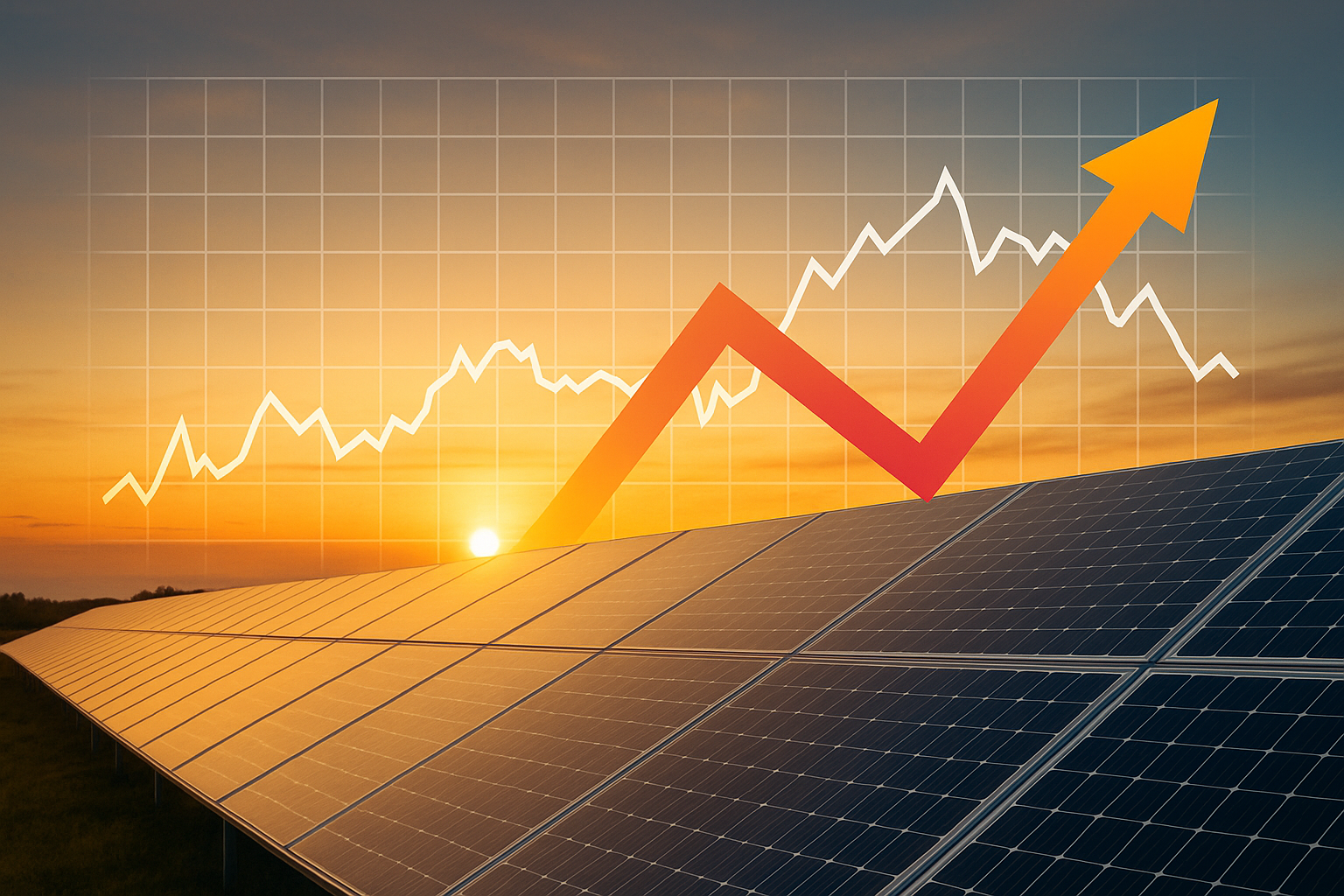More than 10.000 registered B2B customers
Solar module price volatility: anticipating the inflection point after 1 May 2025

Introduction
The price curve for solar modules appeared to have bottomed out in 2024: in Europe the average transaction price dropped to € 0.06/W. Since January 2025, however, prices have been edging upward again. In April, spot prices for n‑type modules reached $ 0.085/W—a +1.19 % month‑on‑month increase—while some European platforms reported price hikes of 15 % as of 1 February.[1][2] At the same time, global production capacity still sits at roughly twice the expected demand (≈ 1,400 GW versus 660‑700 GW).[3]
So what does this mean for buy‑and‑sell decisions after 1 May 2025? This blog unpacks the drivers behind today’s price volatility and converts them into actionable strategies for solar professionals.
1. Facts: price movements in Q1 2025
- A modest but clear uptick: China FOB prices +2 % in Q1; Europe follows with +1‑3 % depending on watt‑class.
- High‑efficiency is in the lead: HJT and TOPCon panels currently command a 4‑7 ct/W premium over PERC alternatives.
- Upstream inventory build‑up: major Tier‑1 manufacturers deliberately hold stock to support margins; Tier‑2 players continue to dump oversupply.
Data source: pv magazine Module Price Index, 28 February 2025; InfoLink spot price report, 11 April 2025.
2. Causes of the reversal
| Driver | Explanation | Impact on price |
|---|---|---|
| Polysilicon cycle | Shutdowns in Yunnan (water shortage) & maintenance at Tongwei | +0.4 ct/W |
| Capex pressure | Investments in n‑type lines must be recovered | +0.2 ct/W |
| US trade risks | Export volumes shift from Cambodia/Vietnam to the EU | +0.5 ct/W (temporary) |
| Inventory balancing | Traders bought cheaply in H2 2024; now margins are taken | +0.3 ct/W |
3. Outlook: correction before Q3 2025
Consensus forecasts suggest the current price peak will be short‑lived. Once Chinese plants run at 90‑95 % utilisation again in May and European installers finish the peak season (June–July), the supply glut should resurface. Projection:
- Early June: stabilisation around $0.086‑0.088/W.
- End Q2: decline to $0.080/W (‑7 %).
- Q4 2025: possible return to the $0.072‑0.076/W band if overcapacity persists.
4. Strategies for SolarXtrade clients
- Contract flexibility: include price‑escalator clauses with quarterly instead of semi‑annual revisions.
- Layered purchasing: split volumes 40‑30‑30 % over May, July and September to average down.
- Currency hedging: dollar strength can create up to 2 ct/W difference on CNH‑priced modules.
- Quality positioning: move into n‑type now that the premium is relatively small; this avoids technical obsolescence.
- Inventory 2.0: maintain max six‑week turnover; place the remainder with installers on consignment.
5. Practical action plan
| Step | Deadline | Action |
|---|---|---|
| Portfolio scan | 10 May | List contracts > € 500 k and check price revision terms |
| Supplier call | 15 May | Request updated price sheet for volumes ≥ 5 MW |
| FX hedge | 20 May | Lock EUR‑USD option at 1.07 for July deliveries |
| Marketing | 25 May | Communicate to customers: “price security until 31 August” |
Conclusion
Although today’s price spike squeezes margins, it is likely a brief interlude. By purchasing flexibly, phasing volumes and shielding contracts, you can capitalise on rather than fear the turning point. SolarXtrade supports you with real‑time price data and smart inventory financing. Contact us for a personalised scenario plan.
Sources
- European solar module purchase platform reports 20 % increase in panel prices (pv magazine, 29 Jan 2025).
- Global solar module prices largely stabilise with upward momentum (pv magazine, 28 Feb 2025).
- Solar module downward price trend has been reversed (pv magazine, 24 Feb 2025).
No posts found
Write a review



